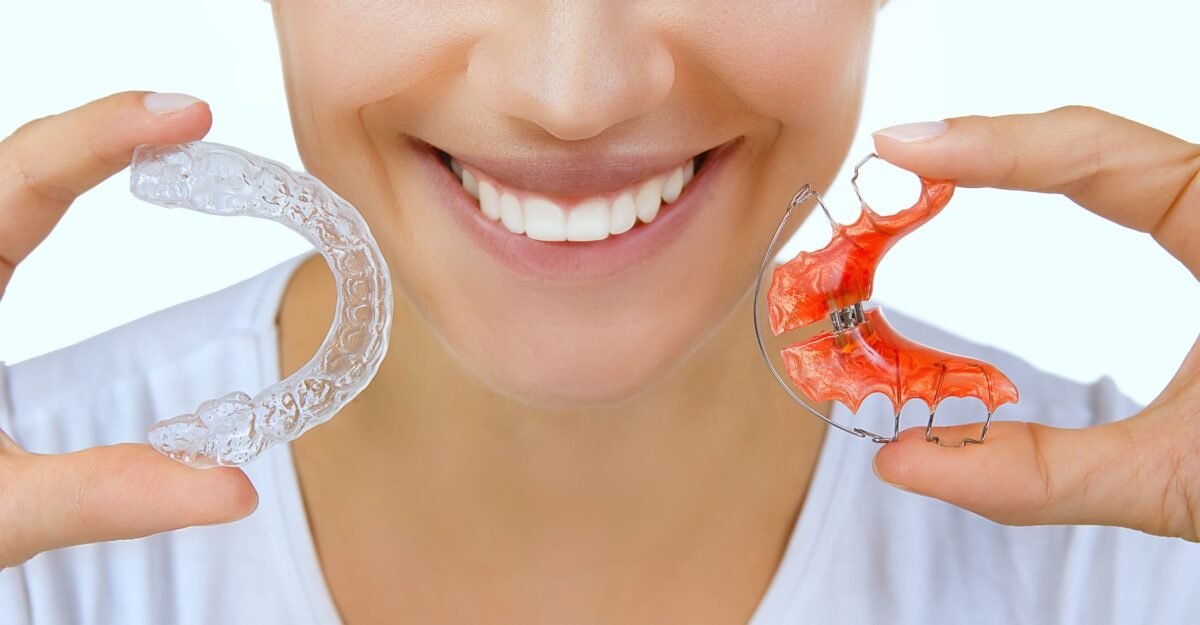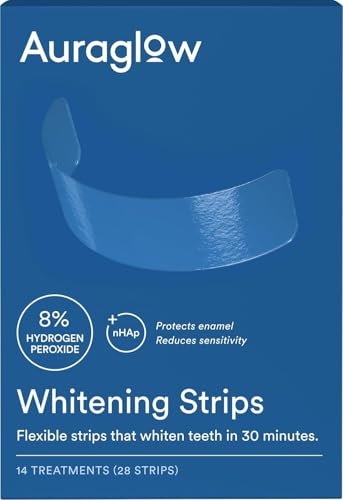Table of Contents
The Importance of Consulting with an Orthodontist
When it comes to orthodontic treatment, it is of utmost importance to consult with an orthodontist. Orthodontists are experts in the field of dentistry who specialize in the diagnosis, prevention, and treatment of dental and facial irregularities. They undergo extensive training and education beyond that of a general dentist, which equips them with the knowledge and skills needed to provide the best possible care for their patients.
One of the main reasons why consulting with an orthodontist is crucial is because they can accurately assess your orthodontic needs. They have the expertise to evaluate your teeth, jaws, and facial structure to determine the most appropriate treatment options for you. Whether you have crooked teeth, a misaligned bite, or any other orthodontic issue, an orthodontist will be able to diagnose the problem and create a customized treatment plan tailored to your specific needs. By seeking the advice of an orthodontist, you can rest assured knowing that you are receiving expert guidance and the highest standard of care for your orthodontic concerns.
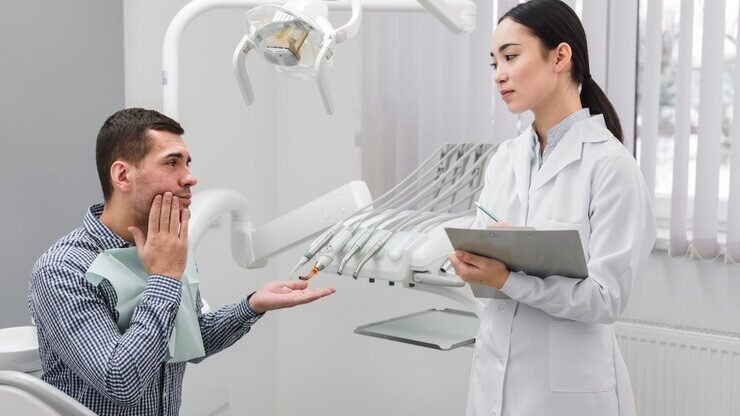
Fixed Retainers: An Overview
Fixed retainers, also known as permanent retainers, are a type of orthodontic appliance that is bonded to the back of the teeth to maintain the results achieved through orthodontic treatment. Unlike removable retainers, fixed retainers cannot be taken out and are designed to be worn indefinitely.
The main purpose of fixed retainers is to prevent the teeth from shifting back to their original positions after braces or other orthodontic treatments. The retainer consists of a thin wire that is custom-made to fit the shape of the teeth and is cemented in place using dental adhesive. This wire is usually made of stainless steel or a similar material that is resistant to corrosion and provides stability.
Fixed retainers are particularly effective in holding the lower front teeth in place, as these teeth have a higher tendency to relapse. They provide a constant force that keeps the teeth aligned and prevents any unwanted movement. Additionally, fixed retainers require minimal maintenance once they are bonded in place, making them a convenient option for individuals who may forget to wear or properly care for removable retainers.
Overall, fixed retainers offer a reliable and low-maintenance solution for maintaining the results of orthodontic treatment. While they may not be suitable for everyone, consulting with an orthodontist can help determine if fixed retainers are the right choice for you based on your specific dental needs and lifestyle.
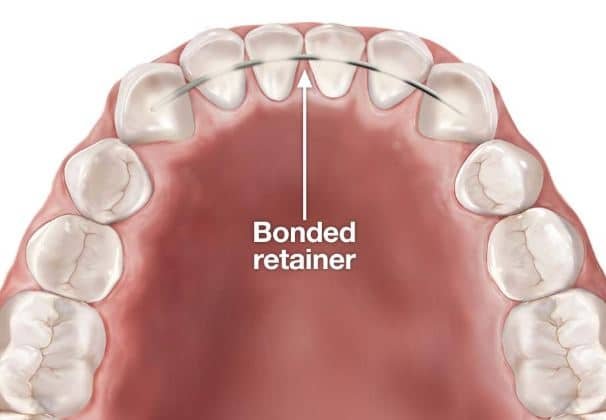
Advantages and Disadvantages of Fixed Retainers
Fixed retainers are a popular option in orthodontic treatment due to their many advantages. One of the main benefits of fixed retainers is their ability to provide constant support and stabilization to the teeth. Unlike removable retainers, which may be forgotten or misplaced, fixed retainers are bonded to the back of the teeth, ensuring that they remain in place at all times. This helps prevent any unwanted shifts or relapse of the teeth, keeping them in their desired position.
Another advantage of fixed retainers is their low maintenance requirement. Once they are securely bonded, there is no need to remove or adjust them regularly. Patients can continue with their daily oral hygiene routine, including brushing and flossing, without any hindrance. This convenience and ease of use make fixed retainers a popular choice for those looking for a hassle-free solution post-orthodontic treatment.
However, fixed retainers also have some potential disadvantages that patients should be aware of. One such drawback is the difficulty in cleaning around the bonded wire. While fixed retainers do not impede regular oral hygiene practices, it can be challenging to thoroughly clean the area around the wire, increasing the risk of plaque accumulation and the development of dental issues. Regular dental check-ups and professional cleanings can help address this concern and ensure the ongoing health of the teeth and gums.
Additionally, fixed retainers may cause some initial discomfort or speech changes as the tongue adjusts to the presence of the wire. This is usually temporary and resolves as the patient becomes accustomed to the retainer. However, it is important to communicate any persistent discomfort or speech difficulties to the orthodontist for appropriate adjustments or guidance.
In conclusion, fixed retainers offer numerous advantages, including continuous tooth stabilization and minimal maintenance. However, patients should also consider the potential challenges of cleaning around the wire and the need for initial adjustment. It is important to consult with an orthodontist to determine if fixed retainers are the most suitable option for your specific orthodontic needs.
Removable Retainers: An Overview
Removable retainers play an essential role in orthodontic treatment by helping to maintain the alignment and position of straightened teeth. As the name suggests, these retainers are designed to be easily taken out and put back in, providing flexibility for patients. Made from a combination of plastic and metal, removable retainers are custom-made to fit each individual’s mouth to ensure optimal comfort and effectiveness.
One of the primary advantages of removable retainers is their convenience. Unlike fixed retainers, which are permanently bonded to the back of the teeth, removable retainers can be easily removed for eating, brushing, and flossing. This allows for better oral hygiene maintenance and reduces the risk of plaque buildup and tooth decay. Additionally, removable retainers are often more comfortable to wear compared to fixed options, as they do not interfere with normal speech patterns or cause irritation to the gums or soft tissues. However, it is important to note that wearing the retainer as directed by your orthodontist is crucial for the treatment’s long-term success.
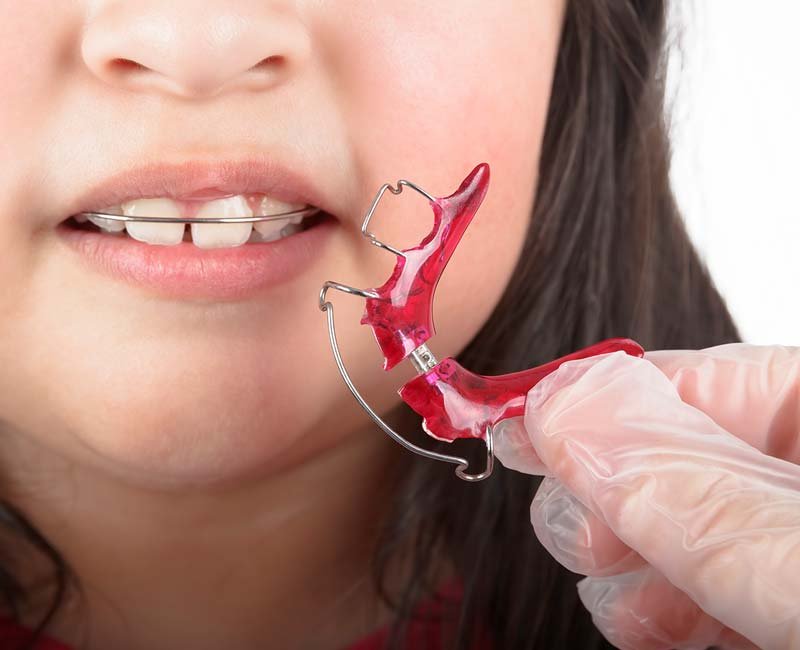
Advantages and Disadvantages of Removable Retainers
Removable retainers are a popular choice among patients for several reasons. One advantage is their convenience. Unlike fixed retainers, removable retainers can be easily taken out and put back in, allowing for better oral hygiene and the ability to enjoy certain foods without restrictions. This flexibility is especially beneficial for those who may have difficulty cleaning around fixed retainers or who prefer the freedom of not having a permanent appliance in their mouths.
Another advantage of removable retainers is their adjustability. These retainers can be customized to fit the patient’s unique needs and adjusted over time, ensuring optimal comfort and effectiveness. This adjustability also allows for minor corrections to be made, such as closing small gaps or aligning slightly shifted teeth. In addition, removable retainers can be modified or replaced as needed, making them a versatile option for long-term use.
However, it’s important to note that there are also disadvantages to consider when choosing a removable retainer. One main drawback is the potential for loss or misplacement. Since these retainers can be taken out, there is a higher risk of misplacing them, especially when eating or cleaning. This can be a costly issue, as replacement retainers may need to be purchased.
Furthermore, removable retainers require a high level of patient compliance for optimal results. It is essential to wear the retainer as instructed by the orthodontist, typically for a specific number of hours per day or during specific times. Failure to comply with the wearing schedule can result in tooth movement or relapse, requiring additional orthodontic treatment.
While removable retainers offer convenience and customization, patients must weigh these advantages against the potential for loss and the need for consistent compliance. Consulting with an orthodontist can help determine if a removable retainer is the right choice for maintaining a straight and healthy smile.
Hawley Retainers: A Detailed Look
Hawley retainers are a type of removable retainer commonly used in orthodontic treatment. They are made of a combination of metal wire and acrylic and are custom-made to fit each individual patient’s mouth. One of the key features of Hawley retainers is the presence of a labial bow, which is a curved metal wire that sits along the front of the teeth.
The labial bow in Hawley retainers serves several important functions. Firstly, it helps to maintain the alignment of the teeth, preventing them from shifting back to their original positions. Additionally, the labial bow provides stability and support to the front teeth, ensuring that they do not move excessively during the retention phase of orthodontic treatment. This helps to achieve long-term stability and a lasting outcome. Hawley retainers are also adjustable, which allows orthodontists to make necessary modifications to ensure optimal fit and effectiveness. Overall, Hawley retainers offer a reliable and customizable option for patients seeking to maintain the results of their orthodontic treatment.
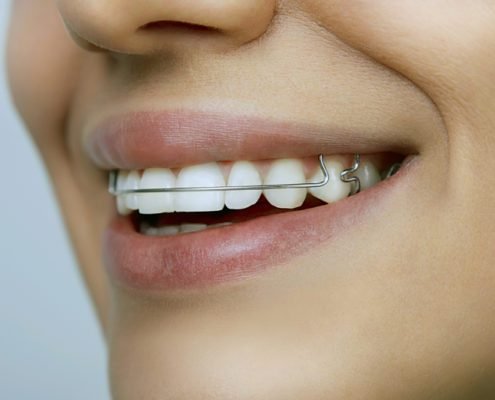
Advantages and Disadvantages of Hawley Retainers
Advantages of Hawley Retainers:
1. Effective Teeth Alignment: Hawley retainers are known for their ability to efficiently maintain the position of your teeth. The design includes a thin metal wire that wraps around the front of your teeth and is anchored by an acrylic plate that fits against the roof of your mouth. This combination allows for precise adjustment of the teeth, ensuring they remain straight and aligned over time.
2. Durability: One of the key advantages of Hawley retainers is their durability. The metal wire used in their construction is resistant to bending or breaking, making them a long-lasting option for teeth retention. Additionally, the acrylic plate is known for its strength and can withstand regular wear and tear without experiencing significant damage.
Disadvantages of Hawley Retainers:
1. Visibility: Unlike some other retainer options, Hawley retainers are quite noticeable when worn. This can be a concern for individuals who prefer a more discreet option, as the metal wire is visible across the front of your teeth. However, for those who are more focused on the effectiveness of the retainer rather than aesthetics, this may not be a significant drawback.
2. Speech Impediment: Some wearers may experience temporary speech changes when first using a Hawley retainer due to its presence in the mouth. The acrylic plate can initially interfere with tongue movement and placement, causing slight difficulty in articulating certain sounds. With time, however, most individuals adapt and regain their normal speech patterns.
Essix Retainers: A Detailed Look
Essix retainers are a popular choice for many individuals who have undergone orthodontic treatment. These retainers are made of a clear plastic material, making them less noticeable than other types of retainers. They are custom-made to fit over the teeth, providing a snug and comfortable fit.
One of the biggest advantages of Essix retainers is their aesthetic appeal. Unlike traditional metal braces or even some other types of retainers, Essix retainers are virtually invisible when worn. This makes them an ideal choice for individuals who want to maintain a more natural appearance after completing their orthodontic treatment. Plus, their smooth and sleek design makes them comfortable to wear, minimizing any potential discomfort or irritation that can occur with other types of retainers.
While Essix retainers offer many benefits, it’s important to note that they do have some limitations. Because they are made of a clear plastic material, they may not be as durable as other types of retainers. If not properly cared for, they can become warped, cracked, or discolored over time. Additionally, Essix retainers may not be suitable for individuals with certain occlusion or biting issues, as they might not provide the necessary support or correction. Consulting with an orthodontist is crucial to determine if Essix retainers are the right option for your specific needs and to ensure optimal results in maintaining the alignment of your teeth.
Advantages and Disadvantages of Essix Retainers
Advantages of Essix Retainers
Essix retainers offer several advantages for patients seeking a discreet and comfortable way to maintain their orthodontic treatment. One of the main benefits of Essix retainers is their clear and transparent design, which allows them to blend seamlessly with the natural color of the teeth. This makes them an ideal choice for individuals who prefer a more subtle and inconspicuous option.
Another advantage of Essix retainers is their ease of use and convenience. Unlike traditional wire retainers, Essix retainers are removable, allowing for easy cleaning and maintenance. This makes it easier for patients to maintain good oral hygiene, reducing the risk of dental health issues such as tooth decay and gum disease. Additionally, the removable nature of Essix retainers means that patients can temporarily remove them during special occasions or when participating in certain activities, providing greater flexibility and comfort.
Disadvantages of Essix Retainers
Although Essix retainers offer numerous advantages, there are also a few considerations to keep in mind. One potential drawback of Essix retainers is their susceptibility to wear and tear over time. Due to their thin and flexible material, Essix retainers may need to be replaced more frequently compared to other types of retainers. This can result in additional costs for patients, requiring them to periodically invest in new retainers to ensure the effectiveness of their orthodontic treatment.
Furthermore, some patients may find Essix retainers initially uncomfortable or challenging to adapt to compared to traditional wire retainers. The snug fit of Essix retainers may cause mild discomfort or difficulty speaking for a short period, but these issues typically resolve as the patient becomes accustomed to wearing the retainer. It’s important for patients to follow their orthodontists’ instructions and wear the retainer as prescribed to achieve the desired results.
Please note that this article is intended for informational purposes only and should not replace professional dental advice. It is essential to consult with an orthodontist or a qualified dental professional for a personalized assessment and guidance on the most suitable retainer option for your specific needs.
Modified Essix Retainers: A Detailed Look
Modified Essix retainers are a popular choice among orthodontic patients for their effectiveness in maintaining the position of teeth after orthodontic treatment. These retainers are made from a clear, thermoplastic material that is custom-fitted to the patient’s teeth. One of the main advantages of modified Essix retainers is that they are virtually invisible, making them aesthetically pleasing for those who are conscious about their appearance.
In addition to being discreet, modified Essix retainers offer several other benefits. They are comfortable to wear and do not cause significant speech impediments or discomfort. The smooth surface of the retainer also reduces irritation to the gums and oral tissues. Moreover, these retainers are easy to remove and clean, contributing to better oral hygiene. However, it’s important to note that while modified Essix retainers are effective for maintaining the position of teeth, they may not be suitable for all cases. The orthodontist will evaluate each patient individually to determine the most appropriate type of retainer based on their specific needs and treatment goals.
Advantages and Disadvantages of Modified Essix Retainers
Modified Essix retainers are a popular choice among orthodontic patients for a variety of reasons. One of the main advantages is their discreet appearance. Made from a transparent plastic material, modified Essix retainers are virtually invisible when worn, allowing patients to maintain their confidence while their teeth continue to be aligned. This is particularly beneficial for individuals who are self-conscious about wearing a retainer in public.
Another advantage of modified Essix retainers is their ease of use and maintenance. Unlike fixed retainers that are attached to the teeth, these retainers can be easily removed by the patient when necessary. This makes brushing and flossing more convenient, allowing for optimal oral hygiene. Additionally, the removeability of modified Essix retainers makes them a practical choice for athletes, as they can be taken out during sports activities to minimize the risk of injury.
Clear Aligner Retainers: A Detailed Look
Clear aligner retainers are a popular choice for orthodontic patients due to their discreet appearance and comfortable fit. These retainers are made from a transparent plastic material that is custom-designed to fit over the teeth, providing gentle pressure to maintain the alignment achieved during orthodontic treatment. Clear aligner retainers are typically worn for a certain number of hours each day, with most patients advised to wear them for at least 20-22 hours.
The major advantage of clear aligner retainers is their nearly invisible appearance, making them a preferred choice for individuals who are conscious about the aesthetics of their smile. They are also removable, allowing for easier maintenance of oral hygiene compared to fixed retainers. However, it is important to note that clear aligner retainers may not be suitable for all cases, particularly those with more complex orthodontic issues. Consulting with an orthodontist is crucial to determine if clear aligner retainers are the right choice for you and to ensure the best possible outcome in maintaining your straightened teeth.
Advantages and Disadvantages of Clear Aligner Retainers
Clear aligner retainers have become increasingly popular in recent years due to their many advantages. One of the main advantages of clear aligner retainers is their nearly invisible appearance. Unlike traditional metal braces or other types of retainers, clear aligner retainers are created from a clear, transparent material that makes them blend seamlessly with the teeth. This makes them a great option for individuals who may feel self-conscious about wearing a retainer.
Another advantage of clear aligner retainers is their ease of use. Unlike fixed retainers that are permanently bonded to the teeth, clear aligner retainers can be easily removed when necessary. This means that individuals can easily take them out while eating, brushing, or flossing, which can significantly improve oral hygiene. Moreover, clear aligner retainers are comfortable to wear and do not cause any discomfort or irritation to the mouth.
However, like any orthodontic treatment, clear aligner retainers also have their disadvantages. One major disadvantage is that they require discipline and commitment from the patient. Clear aligner retainers must be worn consistently for a certain number of hours each day in order to achieve the desired results. Failure to wear them as directed can result in delays in tooth movement or even regression of treatment progress. Additionally, clear aligner retainers may not be suitable for individuals with more complex orthodontic issues, as they may not provide the necessary force or control to correct these problems. Consulting with an orthodontist is essential to determine if clear aligner retainers are the right option for one’s specific needs.
Overall, while clear aligner retainers offer numerous advantages such as their discreet appearance and ease of use, they may not be suitable for everyone. It is important to consult with an orthodontist who can evaluate one’s specific orthodontic needs and recommend the most appropriate type of retainer.
Fixed vs. Removable Retainers: Which is Right for You?
When it comes to choosing between fixed and removable retainers, it’s important to consider your specific needs and lifestyle. Fixed retainers, also known as bonded or permanent retainers, are cemented to the back of your teeth and are not removable by the patient. They are typically recommended for individuals who have had extensive orthodontic treatment or have a high risk of teeth shifting. Fixed retainers provide continuous support and help prevent any unwanted movement of the teeth. However, they require proper maintenance and regular check-ups with your orthodontist to ensure they are functioning correctly.
On the other hand, removable retainers offer flexibility and convenience. They are designed to be taken out for eating, brushing, and flossing. Removable retainers, such as clear aligner retainers or removable Hawley retainers, can be a suitable option for those who are diligent about wearing them as prescribed. These retainers are easy to clean and allow for better oral hygiene compared to fixed retainers. However, the responsibility falls on the patient to remember to wear them consistently and to take proper care of them to avoid damage or loss.
Ultimately, the decision between fixed and removable retainers should be made in consultation with an orthodontist. They will evaluate your specific orthodontic needs, dental history, and lifestyle to determine which type of retainer is the most appropriate for you. The orthodontist will consider factors such as the complexity of the original orthodontic treatment, risk of relapse, and patient compliance. By working closely with your orthodontist and following their recommendations, you can ensure the retention phase of your orthodontic treatment is successful in maintaining the beautiful smile you’ve worked so hard to achieve.
| Feature | Fixed Retainers | Removable Retainers |
|---|---|---|
| Placement | Bonded to the back of teeth | Inserted and removed by the wearer |
| Visibility | Not visible when smiling or talking | Visible when not being worn |
| Convenience | No need to remove or remember to wear | Must be removed for eating, brushing, and flossing |
| Maintenance | Requires regular dental check-ups | Requires daily cleaning and occasional soaking |
| Effectiveness | Generally more effective in preventing movement of teeth | Effective if worn as instructed |
| Compliance | Ensures constant retention unless removed | Relies on wearer’s diligence |
| Cost | Usually more expensive initially | Generally less expensive initially |
| Longevity | Typically lasts several years | May need replacement due to wear or loss |
Additional Factors to Consider When Choosing a Retainer
When choosing a retainer, there are additional factors to consider beyond the type that will best suit your needs. One important factor is the durability of the retainer. You’ll want to select a retainer that is made from high-quality materials and can withstand daily wear and tear. A durable retainer will not only last longer, but it will also provide better support for your teeth, ensuring that they maintain their correct alignment over time. It’s also worth considering a retainer that can be easily adjusted or repaired if necessary, as this can save you time and money in the long run.
Another factor to consider is the comfort of the retainer. Since you will be wearing it for extended periods of time, it’s crucial that the retainer is comfortable and doesn’t cause any pain or irritation. Look for a retainer that is custom-made to fit your mouth, as this will ensure a snug and comfortable fit. Additionally, consider the design of the retainer and whether it will interfere with your speech or ability to eat comfortably. Taking these factors into account will help you select a retainer that not only maintains the alignment of your teeth but also provides a comfortable and hassle-free experience.
| Factor | Description |
|---|---|
| Type of Retainer | – Hawley Retainer: Removable, made of acrylic and wires. <br>- Essix Retainer: Clear, removable, made of plastic. <br>- Fixed Retainer: Cemented onto teeth. |
| Comfort | – How comfortable is the retainer to wear for extended periods? |
| Visibility | – Is the retainer noticeable when worn? |
| Durability | – How long will the retainer last without needing replacement or repairs? |
| Cost | – What is the initial cost of the retainer, and are there any additional fees for maintenance or adjustments? |
| Maintenance | – How easy is it to clean and maintain the retainer? |
| Adjustability | – Can the retainer be adjusted if needed? |
| Effectiveness in Retaining Teeth | – How well does the retainer hold teeth in their corrected position? |
| Speech Impediment | – Does the retainer affect speech or cause lisping? |
| Compatibility with Dental Work | – Can the retainer be used with dental implants, crowns, or other dental work? |
| Insurance Coverage | – Does dental insurance cover the cost of the retainer? |
Maintaining and Caring for Your Retainer
Maintaining and caring for your retainer is crucial to ensure the successful outcome of your orthodontic treatment. Your retainer plays a vital role in keeping your teeth in their new, aligned position, and neglecting its maintenance could lead to relapse or even damage to the retainer itself.
First and foremost, it is essential to clean your retainer regularly to prevent the buildup of plaque and bacteria. Gently brush your retainer with a soft toothbrush and non-abrasive toothpaste to remove any debris or residue. Avoid using hot water, as it can distort the shape of your retainer. Additionally, be sure to soak your retainer in a denture cleaner or a mixture of water and mild soap as recommended by your orthodontist. This will help eliminate any stubborn bacteria and keep your retainer fresh and odor-free.
In addition to proper cleaning, it’s important to handle your retainer with care. Always remove your retainer before eating or drinking anything other than water to prevent damage and staining. When not in use, store your retainer in its designated case to protect it from being lost or inadvertently damaged. Avoid exposing your retainer to extreme temperatures, as it can affect its shape and functionality. By following these simple maintenance tips, you can ensure that your retainer remains in optimal condition, promoting the long-term stability of your orthodontic treatment.
How often should I consult with an orthodontist about my retainer?
It is recommended to consult with an orthodontist regularly, at least once every six months, to ensure your retainer is still fitting properly and to address any concerns or issues that may arise.
Can I wear a fixed retainer while playing sports or participating in physical activities?
It is generally not recommended to wear a fixed retainer while engaging in sports or physical activities that may pose a risk of impact to the mouth. It is best to consult with your orthodontist for specific guidance based on your individual situation.
Are removable retainers easy to clean?
Yes, removable retainers are relatively easy to clean. You can use a soft toothbrush and mild soap or retainer cleaning tablets to clean them. It is important to follow the instructions provided by your orthodontist for proper cleaning and maintenance.
Can I eat with a Hawley retainer in my mouth?
It is generally recommended to remove your Hawley retainer before eating to prevent damage or distortion. However, your orthodontist may provide specific instructions based on your individual case.
How long do Essix retainers typically last?
Essix retainers can last for several years with proper care and maintenance. However, they may need to be replaced over time due to normal wear and tear or if they become damaged.
Are Modified Essix retainers more expensive than traditional Essix retainers?
The cost of Modified Essix retainers may vary depending on the specific modifications required. It is best to consult with your orthodontist for an accurate cost estimate.
Can Clear Aligner retainers be used as an alternative to braces?
Clear Aligner retainers are primarily used as a post-treatment option to maintain the results achieved through orthodontic treatment. They may not be suitable for correcting significant misalignment or bite issues.
How do I know if a fixed or removable retainer is right for me?
The decision between a fixed or removable retainer depends on various factors such as the specific orthodontic treatment you received, your oral health, and personal preference. Your orthodontist can evaluate your individual needs and recommend the most suitable option for you.
Are there any additional factors I should consider when choosing a retainer?
Yes, some additional factors to consider include the comfort of the retainer, ease of maintenance, durability, and any lifestyle factors that may affect your ability to wear and care for the retainer consistently.
What should I do if my retainer gets damaged or doesn’t fit properly?
If your retainer gets damaged or doesn’t fit properly, it is important to contact your orthodontist as soon as possible. They can assess the issue and make any necessary adjustments or repairs to ensure the retainer continues to effectively maintain your orthodontic results.

